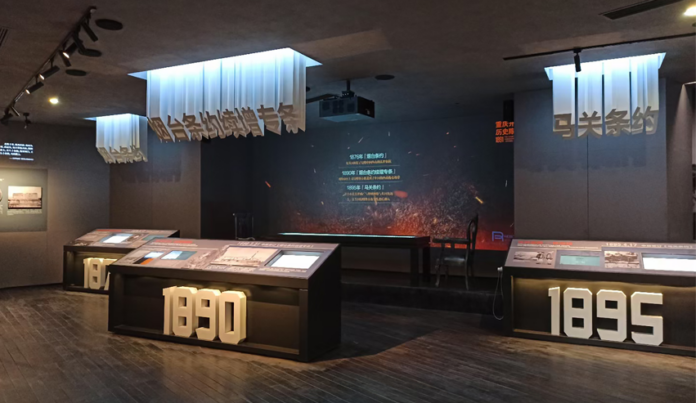Christie laser projectors are illuminating various exhibits in the new Chongqing Open Port History Museum with visuals that highlight the rise and development of the biggest river port in southwest China.
Located in the Nan’an district of Chongqing city, the museum is established upon the grounds of a 125-year-old cultural relic site formerly known as Little firm, a trading company founded by British businessman and adventurer Archibald John Little in 1896. The two-story building occupies a total area of 800 square meters (around 8,600 square feet) and is recognized for its unique Chinese and foreign architectural features.
Among the highlights of the museum are projections accomplished by nine Christie LWU900-DS 3LCD laser projectors supplied by Christie’s trusted partner Dicction (Beijing) Science and Technology Development Co., Ltd. Deployed across several exhibition zones, the projectors complement a variety of interactive showpieces and are used to showcase the rich history and cultural aspects of Chongqing as an open port and municipality.
“The museum was looking for a bright, reliable and cost-effective laser projection solution for various zones. The Christie DS Series, with its sleek appearance and versatility, ticks all the right boxes,” said Leo Zhang, chief executive officer, Dicction. “With a suite of features such as built-in edge blending and warping with color adjustment, the DS Series delivered in all aspects and exceeded the client’s expectations. We are very pleased with how the projectors have brought the exhibition zones to life.”
April Qin, sales director for China, Enterprise, Christie, commented, “We are delighted that Chongqing Open Port History Museum has chosen our DS Series laser projectors to illuminate several major exhibits that highlight Chongqing’s opening as a port from a historical and cultural perspective. The ability to combine physical exhibits with projected content has proved to be highly effective in delivering stunning immersive experiences to visitors, and we look forward to working with more public venues, which are increasingly looking to projection to add that all-important ‘wow factor’ to permanent and temporary installations.”








